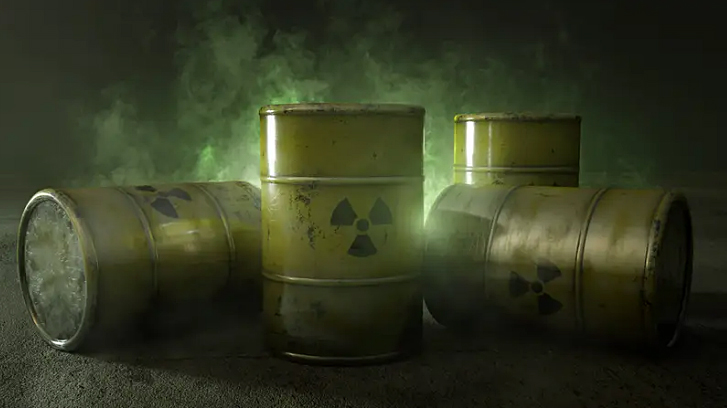
As America’s energy crisis has accelerated, the subject of nuclear power has reemerged. Three Mile Island and the Chernobyl nuclear power plant disaster have receded into history and an entire generation has no memory of these two near catastrophic events. Nuclear power plant construction is regaining support within both political parties. The use of nuclear power in Europe and other parts of the world is used as reassurance that this form of energy production is safe, reliable and nonpolluting; this in spite of the toxicity of some of the most dangerous substances in the history of mankind.
Plutonium isotopes (the stuff of nuclear weapons), are a common byproduct of nuclear power reactors, as are many other toxic radioactive isotopes. The half-life of plutonium-239 is 24,000 years, which means that in that amount of time, half of the radioactive plutonium concerned would remain. In another 24,000 years, half of that remaining amount would remain, and so forth. In other words, it takes over 200,000 years for plutonium-239 to become fully non-radioactive. Plutonium-242 has a half-life of 376,000 years.
The toxicity of plutonium is enormous. If inhaled into the body, it remains in the lung, liver, bone and bone marrow tissue, where it generates cancerous mutations. Inhalation of as little as a few milligrams is inevitably fatal. Moreover, plutonium is a fissile material, which means it can be used to create a nuclear fission explosion. In the hands of people intent upon making a weapon, it constitutes a major threat to life, and an explosion used to incite terror would likely ignite dire unforeseen circumstances.
At present, the storage and security of fissile materials like plutonium is unresolved. Most “spent” reactor-grade radioactive materials are stored in deep pools of water at the nuclear power stations themselves. Their movement by rail or truck is so controversial and dangerous that protocols for their safe transport and storage remain undeveloped.
A recent EPA report indicates that any nuclear storage facility must be able to provide a secure and inviolable repository for one million years. This, of course, is well beyond our proven capability as a culture, as is, frankly, only 24,000 years or even 1,000. To place these numbers in perspective, keep in mind that no known human language on earth is older than 7,000 years, and most ancient languages no longer are spoken or understood. To assume that any language spoken today will exist in 24,000 years is far-fetched. To assume that the danger of any human enterprise can be properly communicated in one million years is nonsensical. Even if transport and storage solutions are developed, there is no possible way to insure that future civilizations will understand what we have done, and the terrible dangers associated with it. This is what is called a semiotic problem; that is, how to communicate danger to an unknown culture with its own symbolic and linguistic conventions. It is also a moral problem, because without such a methodology, we place future inhabitants of this planet at terrible risk.
Archaeologists in the past and present have relentlessly excavated and unearthed tombs and artifacts of earlier cultures. Archaeologists of the future will undoubtedly do the same. Producing penetrable depositories of deadly substances therefore constitutes a moral failing of the highest order, and accordingly, “goin’ nukular” should be shelved forever.